Wildflowers are fast-growing, easy-to-grow plants that can add color and interest to any garden.
They are available in a wide range of colors and shapes, which makes them very versatile in the garden.
Because they’re so easy to grow, they’re also a great option for beginners who want to learn how to grow flowers without too much hassle.
Fast growing wildflowers like the ones listed in below will quickly fill up your space with color and beauty – making them perfect for the beginner gardener!
For people who want to make the most of their garden but don’t have a lot of time, wildflowers can be an easy-care plant in the ground that never needs weeding.
Wild flowers also ensure you attract wildlife and naturally contribute to your gardening efforts.
These beautiful wildflowers don’t need pesticides or fertilizer to thrive, they thrive naturally in the best conditions.
So, if you are interested in adding more flowers to your garden, consider planting these varieties around the borders.
List Of Fast Growing Wildflower
Borage
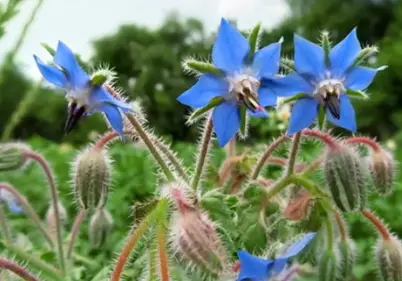
Fast Growing Wildflowers
Borage is a wildflower that grows in the wild and is easy to grow.
It can be found all over the world and can be used as a food source and medicinal herb.
The borage plant has been used since ancient times for its edible leaves, flowers, and roots.
It was also one of the first plants to be cultivated by humans.
In medieval Europe, it was known as “Queen of Flowers” because it was used in many occasions including weddings.
The borage flower can grow up to 3 feet tall and has small flowers with four petals that are blue-purple in color.
-
Growing Zones: 3 to 8
-
Color: Light Blue
-
Exposure: Full sun
-
Soil: Medium moisture
Cowslip
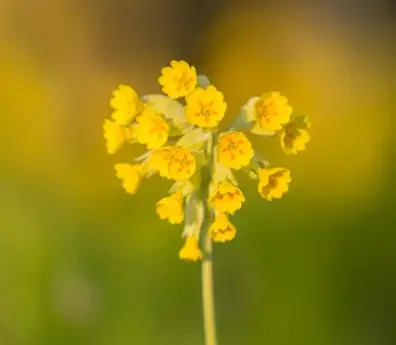
The cowslip is a wildflower that grows quickly and is highly adaptable.
It can grow in a range of different conditions, which makes it an ideal plant to use as an indicator of environmental change.
The cowslip flowers in the spring, and can be found all over Europe, Asia, North America, and Australia.
It has been used for centuries by herbalists as a remedy for digestive issues, such as constipation or diarrhea.
The cowslip is one of the fastest-growing wildflowers in the world.
In just two weeks it can grow from seed to flower with its leaves still attached to its stem.
-
Growing Zones: 4 to 8
-
Color: white Yellow
-
Exposure: Full sun
-
Soil: Medium moisture
Daffodils
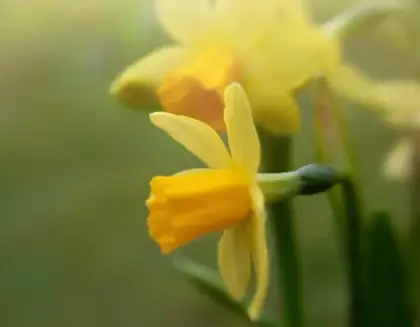
Daffodils are a popular flower that is found in many gardens.
They have been grown for centuries and have many different meanings.
Daffodils grow quickly and bloom in the springtime.
They can be seen in gardens all over the world, but they are native to Europe. Daffodils are a symbol of hope, rebirth, and springtime renewal.
-
Growing Zones: 4 to 8
-
Color: white Yellow, Yellow Orange
-
Exposure: Full sun
-
Soil: Medium moisture, dry soil
English Daisy
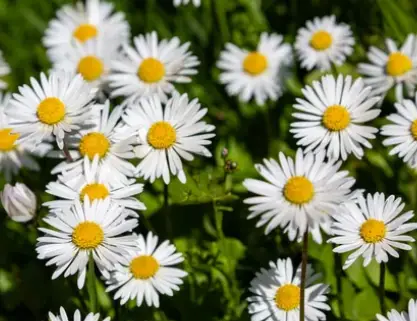
English daisy is a fast growing wildflower that can grow up to 12 inches in height and its flowers are bright yellow.
English daisy is native to North America but it has been introduced in Europe and Asia as well.
English Daisy is the official state flower of Ohio, the state where it was first discovered.
It is also one of the most popular wildflowers because it can be grown anywhere, even in urban areas.
The English daisy has many uses including its flowers that can be used for decoration and food as well as its leaves which can be used for tea or herbal remedies.
-
Growing Zones: 3 to 8
-
Color: White, Purple, Red
-
Exposure: Full sun
-
Soil: Dry to medium moisture
Foxglove

Foxglove is a fast-growing wildflower, native to Europe and Asia. It has been used in folk medicine since ancient times.
Although foxglove is not a common flower, it has been used in folk medicine for centuries.
As more people start to learn about the plant, its use in herbal remedies and homeopathic treatments has increased.
The plant’s name comes from the fact that it looks like a fox’s face when viewed from above.
-
Growing Zones: 3 to 8
-
Color: Purple
-
Exposure: Full sun
-
Soil: Dry to medium moisture
Hellebore

Hellebore is a beautiful and fast growing wildflower that can be found in many parts of the world.
It has been used for medicinal purposes for centuries.
The plant has a ten-petal white flower that blooms from spring to summer.
It grows 1-2 feet tall, with dark green leaves and erect stems.
-
Growing Zones: 4 to 8
-
Color: white
-
Exposure: Full sun
-
Soil: Medium moisture, dry soil
Hollyhock

Hollyhock is a fast-growing wildflower that can grow up to four feet tall and has white flowers with purple edges.
The plant is native to the United States, but it has spread to other countries like Canada and China.
The genus name, Holosteum, comes from the Greek word holos meaning “whole” which means all parts of the plant are used for medicinal purposes.
The plant is a perennial tuberous herb found in fields and in disturbed areas which includes roadsides and by the side of roads.
Despite being a wildflower, it can grow in quite rich soil as long as it is wet.
Hollyhock are mostly grown for their flowers which are a part of the plant used for natural medicine.
-
Growing Zones: 4 to 9
-
Color: Purple, Red, light Yellow
-
Exposure: Full sun
-
Soil: Medium moisture
Black-Eyed Susan

The Black-Eyed Susan is a fast growing wildflower that grows in the United States and Canada.
It is also known as the “American Lady Slipper.” The Black-Eyed Susan is a wildflower that has been around since before the 1600s.
It was once used as an herbal remedy to cure a variety of ailments, including headaches, insomnia, and depression.
The Black-Eyed Susan is a member of the daisy family and blooms from June to September.
Its stem can grow up to three feet tall and it produces large, lavender, four-petaled flowers.
It has a long thin stem with bristles at the top that are mostly hidden by its leaves.
-
Growing Zones: 3 to 8
-
Color: Yellow with dark centers
-
Exposure: Full sun
-
Soil: Dry to medium moisture
Blanket Flower
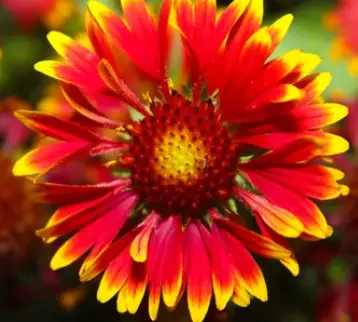
Fast Growing Wildflowers
Blanket flower is a wildflower that grows fast and blooms early in the season.
It is native to the US and Canada, but now it has been introduced to other parts of the world.
Blanket flowers are known for their beautiful, showy flowers that have a variety of colors.
They can be found in many different shapes and sizes, from small to large plants. They are also very hardy and can grow in a variety of conditions from full sun to shade.
Plant this hardy, air-purifying plant in your garden as a ground cover or use it in containers.
The plant takes up little space and will fill the area with its beautiful flowers throughout the summer months.
-
Growing Zones: 3 to 8
-
Color: Red and yellow-orange
-
Exposure: Full sun
-
Soil: Dry to medium moisture, well-drained soil
Mexican Hat
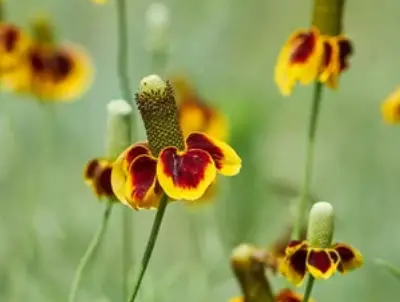
Fast Growing Wildflowers
The Mexican Hat is a small plant with white flowers and long green leaves.
The plant grows in clumps and spreads by seeds throughout the ground.
The plant is commonly found in prairies, but it can grow anywhere there is good soil, including gardens and lawns.
The Mexican Hat has been known to grow up to 10 inches per day during its first year of growth.
However, the plant will stop growing once it reaches about 2 feet tall or so.
-
Growing Zones: 4 to 9
-
Color: Yellow with dark brown centers
-
Exposure: Full sun
-
Soil: Dry to medium moisture, well-drained soil
Blazing Star or Liatris

Blazing stars are a fast growing wildflower that can be found in many different parts of the United States. They grow well in habitats that are moist and well-drained.
Liatris is a fast growing wildflower that grows well in habitats that are moist and well-drained.
It is native to North America and can be found in many different parts of the United States. It has been used as an ornamental plant for centuries and is commonly found at home gardens, parks, botanical gardens, nature reserves, landscaping projects, and roadside areas.
-
Growing Zones: 3 to 8
-
Color: Reddish-purple
-
Exposure: Full sun
-
Soil: Well-drained soil
Maximillian Sunflower
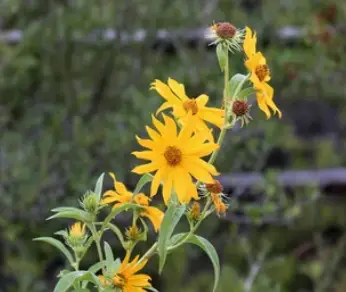
Maximillian Sunflower is a fast growing wildflower that is native to the United States.
It has long been considered as a weed because it grows in areas where other plants don’t.
However, this plant has been given various nicknames such as “the weed with flowers” or “the flower with thorns” due to its strange appearance and characteristics.
It was first described in 1803.
-
Growing Zones: 4 to 9
-
Color: Yellow with dark yellow centers
-
Exposure: Full sun
-
Soil: Dry to medium moisture
Lance-Leaved Coreopsis

Coreopsis is a genus of plants in the sunflower family. It is native to North America and Eurasia.
Lance-Leaved Coreopsis, also known as Lance Leaf Coreopsis, is a wildflower that grows quickly in open areas and natural meadows.
The lance-leaved coreopsis has a long stem with lance-shaped leaves that are mostly basal on the stem.
The flowers are yellow with orange centers and grow together at the top of the stem.
-
Growing Zones: 4 to 9
-
Color: Yellow
-
Exposure: Full sun
-
Soil: Medium moisture
Candytuft

Candytuft is a fast-growing wildflower.
It is a herbaceous plant with linear leaves and white flowers. This plant is native to Europe and has been introduced to North America.
The Candytuft is a common perennial flower that grows in the sun or partial shade with well-drained soil.
It can grow in almost any type of soil, but it prefers moist soils that are rich in organic matter, such as compost or manure.
The leaves are heart-shaped and have three to five lobes.
They are close to the stem and have smooth edges with a few hairs on the stem.
The flowers grow atop a long, hairy, green stem with large green leaves at the base of it.
These leaves are heart-shaped as well and are arranged in two whorls of three or five leaves.
-
Growing Zones: 3 to 8 normally grown as an annual
-
Color: White, purple
-
Exposure: Full sun and shade
-
Soil: Medium moisture, well-drained soil
Wild Blue Flax
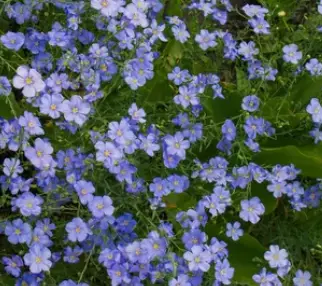
Wild Blue Flax is a fast-growing wildflower that can be found in the United States.
It is a plant that is typically found in moist habitats such as marshes and wet meadows.
This flower’s scientific name is Linum lewisii and it belongs to the genus Linum of the flax family.
The flowers are blue and they have five petals.
The flowers are subtended by three bracts that are fused into a tube. These bracts also have stamens, which produce pollen.
The flower’s common name is blue flax lily and it is sometimes referred to as the Mexican blue lily or the southern American wildflower.
-
Growing Zones: 5 to 8
-
Color: Pale blue
-
Exposure: Full sun to part shade
-
Soil Needs: Medium moisture, well-drained soil
Aster

Native aromatic aster plant flowers in the fall look best as they’re bright blue-purple and have an aroma that is pleasant to humans.
In hardy climates, aromatic aster plants are great ground covers for erosion control. These plants grow up to two feet tall and bloom in late summer through fall.
Asters will grow in all types of soils, but they may need to be staked or caged in windy locations.
-
Growing Zones: 3 to 8
-
Color: Blue, purple
-
Exposure: Full sun
-
Soil: Dry to medium moisture, well-drained soil
Eastern Red Columbine

Eastern red columbine is a fast growing wildflower that is native to the eastern United States.
It blooms in the spring, reaching up to two feet in height.
Eastern Red Columbine is a flower that has been used for medicinal purposes.
Native Americans have used it for centuries to treat a variety of ailments.
It was also used by early settlers and European settlers who found it useful for treating wounds, bruises, and other skin conditions.
Eastern red columbine was given this name because it was thought to bloom earlier than any other wildflower in the region and therefore be an indicator of springtime.
-
Growing Zones: 3 to 8
-
Color: Pink/red and yellow
-
Exposure: Full sun to part shade
-
Soil: Well-drained soil
So, there you have it. These are Fast Growing wildflowers you can start your home garden with.



